IBK-Innovation GmbH & Co. KG
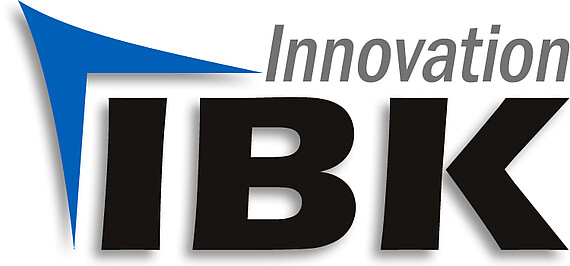
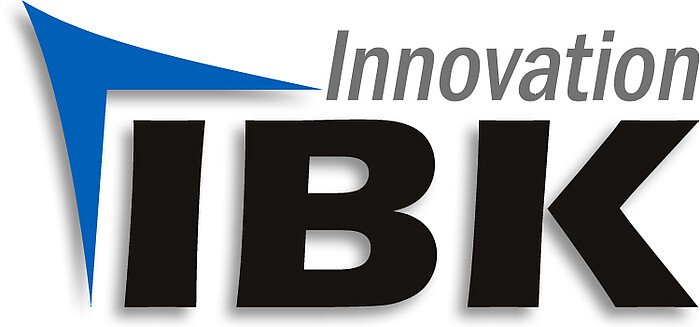
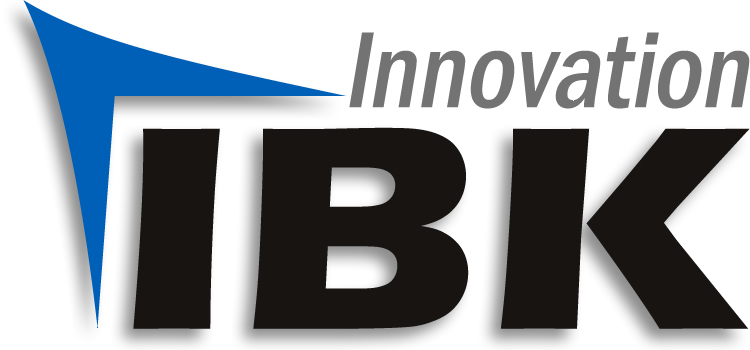
Company: IBK-Innovation GmbH & Co. KG
Address: Butendeichsweg 2, 21129 Hamburg, Germany
Website: www.ibk-innovation.de
Contact person: Nicola Paletta
E-Mail: nicola.paletta@ibk-innovation.de
General description
IBK-Innovation was established in 1985 as engineering office in Nuremberg, Germany, and is now an SME with sites in Nuremberg and Hamburg since 1998. The company is working in the aeronautic field for more than 30 years and contributing to multi-national R&T projects for more than 20 years, initially involved as a partner and more recently also covering the role of coordinator.
IBK has a size of more than 25 engineers plus back-office. IBK’s main activities include R&T support for the aeronautical industry focusing on the following fields
- Aerodynamics:
IBK can perform EULER/ RANS/ URANS analysis of complex situations (high lift for fixed wing A/C, flight conditions in transonic regime, evaluation of laminarity extension, unsteady analysis of moving surfaces and rotating propellers) using the TAU-solver, plus simpler aerodynamic analysis in the own lab as well as planning and management of complex WT-test campaigns: ONERA F1, S1, S3Ch, RUAG LWTE, POLIMI GVPM, DNW NWB & LFF, CIRA IWT, ETW are some of the most important WTs for which IBK designed (or is designing) specific WT models and in some cases managed the whole test campaign.
- Loads, Aeroelasticity and Structural Mechanics:
IBK has a strong group supporting European A/C manufacturer (Airbus, Leonardo the most important ones) in the field of loads/ aeroelasticity, using low- as well as high-fidelity methods. Dynamic loads (gust & turbulence) and flutter analysis are some of the most important activities being currently performed by the IBK team of flight-physics engineers.
IBK has access to standard-tools (NASTRAN/ ADINA/ MATLAB) that allow or support fast modelling and pre-/ post processing of complex linear and nonlinear problems.
- Design:
IBK has all tools available to perform prototype design, to perform stress-calculations/ loads calculations and, thanks to the large network of partners acquired in more than 10 years of activity in the field, to organize manufacturing and validation tests of prototypes, demonstrators and dedicated models. IBK is mainly using CATIA V5 and MSC.NASTRAN for these activities.
Main customers are the European aeronautics industry, starting with Airbus and members of its supply-chain. Since more than 20 years IBK is working in the field of flight-physics and has developed a considerable amount of knowledge w.r.t. the above-mentioned topics. Around 50% of IBK´s turnaround is currently achieved via direct industrial activities. The other 50% of the turnaround are generated by smaller customers, normally with very specific and dedicated needs, and by contributing to German and international R&D projects.
Role in the project
IBK is the Project Coordinator and has a strong technical involvement in all the WPs. Within the WP2, IBK will support LUH in the aeroelastic design and analysis of the Low Transonic Fan (LTF), whereas in WP3 IBK will be responsible of the whole WP, leading the design and supervising the manufacturing of the LTF test article. Within WP4 IBK will support the WT test as designer of the test article, and in WP5 will support LUH in pre- and post-test analysis aimed at calibrating and validating numerical models for aeroelastic analysis.
Leibniz University Hannover



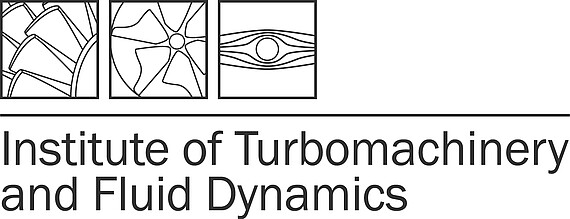
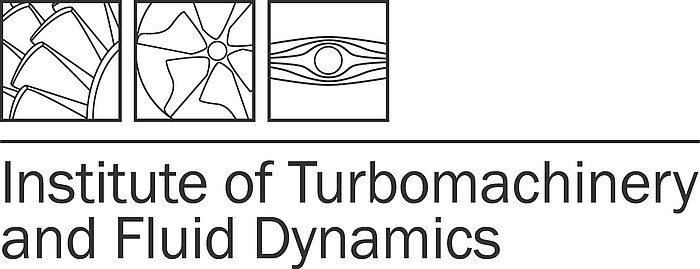
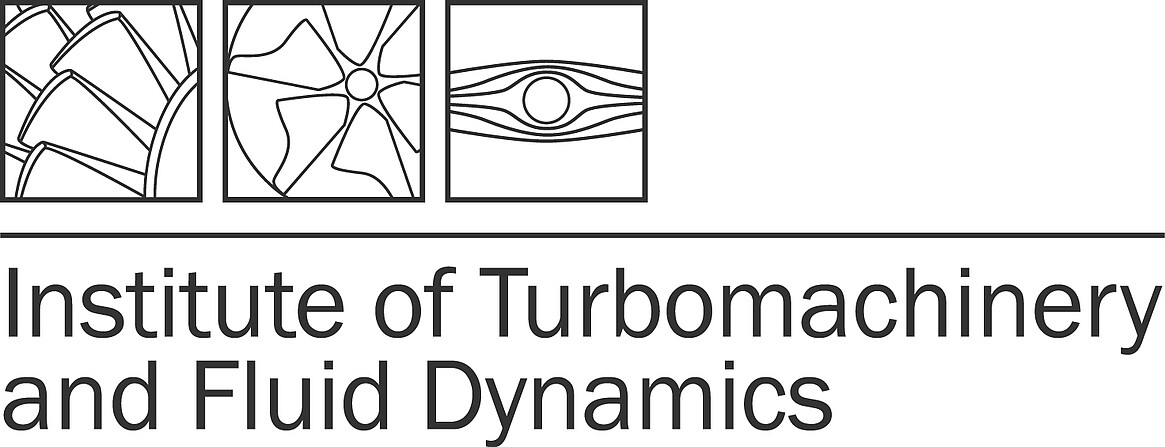
Institute: Institute of Turbomachinery and Fluid Dynamics (TFD)
Address: An der Universität 1, 30823 Garbsen, Germany
Website: www.tfd.uni-hannover.de
Contact person: Prof. Dr.-Ing Jörg Seume
E-Mail: seume@tfd.uni-hannover.de
General description
The Institute of Turbomachinery and Fluid Dynamics (TFD) is part of the Leibniz University Hannover (LUH) in Hanover, Germany. The university consists of 27,600 students in 169 academic disciplines. Its mechanical engineering faculty numbers 3,500 students, 22 professors, 480 scientific staff and 240 technical staff. TFD currently employs 35 researchers together with 28 administrative and technical staff. The head of the institute is Prof. Dr.-Ing. Jörg Seume.
The research agenda at TFD aims to improve thermal turbomachinery, to develop concepts for renewable energy and to enhance the understanding of steady and unsteady phenomena in fluid mechanics. To achieve these goals efficiently, TFD is organised in five research groups: Aeroacoustics and Aeroelasticity, Axial Compressors, Axial Turbines, Turbochargers and Centrifugal Compressors, and the junior research group Multiphysics of Turbulent Flows. All groups work on publicly funded research projects as well as in collaboration with national and international partners in industry. TFD is the coordinating institute of the national Collaborative Research Center 871 (CRC 871) and of the national research programme Dynamics of Energy Conversion. Since mid 2019, the latter will provide new, modern research infrastructure with unique opportunities for research in turbomachinery and power plant components. Since 2017, TFD is the MTU centre of competence for turbine-related research. TFD maintains international cooperation with Prof. Backmann and Prof. Grönmann (University of Lappeenranta, Finland), Prof. Kielb (Duke University, NC, USA), Prof. Tebinjac (École Centrale de Lyon, France), Prof. Verstraete and Prof Van den Braembussche (Van Karman Institute Brussels, Belgium), Prof. Kyriakos Yakinthos (Aristotle University Thessaloniki, Greece), and direct international industrial projects in collaboration with Hitachi (Japan) and AVIC (China), among others.
Role in the project
TFD will provide support in the aeroacoustic and aeroelastic design of the LSF with its in-house design process. Having wide-ranging experience in CFD computations and CFD method development for turbomachinery, the TFD will support partners in the consortium with information specific to the computation of the LSF test rig. TFD will apply its knowledge and in-house quality management processes that have been developed over the years in collaboration with partners in the aerospace industry.
Additionally, TFD will design and conduct aeroacoustic and aeroelastic measurements in close cooperation with TUB. In conjunction with conventional measurement techniques, e.g., microphones and tip timing, the TFD will apply its knowledge of innovative techniques, like fast pressure-sensitive paint (iPSP) and high-speed digital image correlation (DIC), to this project. To analyse the measured data, TFD will provide its knowledge in programming data acquisition software and data analysis tools.
Technische Universität Braunschweig
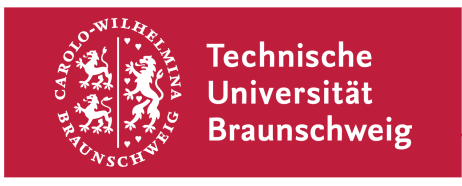





Institute: Institute of Jet propulsion and Turbomachinery (IFAS)
Address: Hermann-Blenk-Strasse 37, 38108 Braunschweig, Germany
Website: www.ifas.tu-bs.de/index.php
Contact person: Prof. Dr.-Ing. Jens Friedrichs
E-Mail: j.friedrichs@ifas.tu-braunschweig.de
General description
TU Braunschweig is situated in one of the most active European regions for research and development in academia, non-university research institutions, and industry (according to Eurostat,). The University was in 1745 and already followed the concept of education based on solid scientific research at that time. Today, TU Braunschweig is a re-search–oriented, medium-sized university counting more than 20.000 students and 2.000 scientist and post-docs in 122 research institutes organized into six faculties. TU Braunschweig is a member of TU9, the German Association of leading universities and its profile is characterised by a complete range of engineering courses together with a full offer in natural sciences and the integration of business sciences, social sciences, humanities and educational science. TU Braunschweig has identified four core research areas: “Mobility”, “Infections and Therapeutics”, “City of the Future”, and “Metrology” and was recently granted with two Clusters of Excellence (“Sustainable and Energy-Efficient Aviation” and “Light and Matter at the Quantum Frontier: Foundations and Applications in Metrology”). The core research area “Mobility” is based on realising a future multimodal system of individual mobility and transportation. Major research topics include intelligent and inter-connected mobility, low-emission and sustainable mobility, vehicle design, and sustainable production. The Institute of Jet Propulsion and Turbomachinery (IFAS) is structured into the three working groups “Propulsion-Systems”, “Turbomachinery Aerodynamics & Performance” and “Hydraulic Machines - Components & Seals”. Currently approx. 30 researches and 10 administrative and technical staff are employed at IFAS. The latter also includes a mechanical shop which is capable of prototype design and manufacturing for experimental turbomachinery research by appropriate technologies (e.g. 5-axis-milling processes). The research mission of IFAS is defined along overall jet engine system research including deterioration, aerodynamics of the propulsor (intake-fan combination) as well as fan and compressor aerodynamics. Special assets of the institute are the propulsion test facility (PTF) and an IAE V2500-A1 research jet engine. The IFAS is member of the Aeronautics Research Centre of Lower Saxony (NFL) allocated at the Braunschweig Research Airport. IFAS is also member of the DFG-CRC 880 “Fundamentals of High-Lift”, the DFG-CRC 871 “Product Regeneration” and speaker institute of the DFG-EXC 2163 Cluster of Excellence “Sustainable and Energy-Efficient Aviation
Role in the project
Within CA3ViAR the IFAS will be responsible for the complete aerodynamic design of the low speed fan (LSF) including the intake (WP2). The LSF will be installed at the existing test rig in the PTF which allows saving expenses especially for support structures, bearings and main shaft. Nevertheless, a sound rotor dynamic analysis will also be performed. In WP3 the participation of IFAS is the rig modification required for CA3ViAR as well as assembly and instrumentation of the entire rig. IFAS will lead the WP4 comprising the definition of test matrix and the test itself which will be done in the PTF. In WP5 the contribution is the post-processing and analysis of the aerodynamic data and model validation. Aerodynamic compressor and fan design as well as compressor test rigs design and operation is one of the key competences of IFAS since several decades. Until 2014 this was limited to low speed test rigs such as different cascade wind tunnels and the LSRC (Low-Speed-Research-Compressor). The LSRC was used in the EU project LEMCOTEC – “Low Emissions Core-Engine Technologies” (FP7) as well as in the national LUFO projects “AeroBlisk”, both focussing on improved 3D aerodynamic design of compressors and increased operational margins. Currently the national AG Turbo projects COOREFlex and ECOFlex (BMWi) with a focus on compressor bleed air extraction and gas path impact are conducted on the rig. In the CRC880 the research focus is on novel UHBR engine integration including BLI effect. This includes also the design an aerodynamic analysis of short engine intake with reduced wetted surface and lip thickness for reduction of drag components. In another project within the CRC the effect of inlet distortion of different integration positions on the fan aerodynamic was investigated. That includes the design of a UHBR (BPR=17) fan with a low pressure (FPR=1,42) using aerodynamic design tools based on classic design rules (i.e. NASA SP36 – NISRE) as well as new methods using class and shape functions. A major very recent result of the analysis of fan performance with distorted inflow was a sensitivity of the fan for local distortions which can exceed the typical DC60-based impact. This occurs whenever the total pressure distortion is concentrated at the outer fan radii generating certain dynamic stall behaviour of the fan. To create a test rig which allows the experimental investigation of future engine concepts with short inlets and or integrated propulsors, a novel Propulsor Test Facility (PTF) was developed and commissioned in 2015 and 2016. The PTF consist of an open system wind tunnel with a measurement section of 2,4x2,4m and a maximum head wind up to Ma=0,25. An internal cross-blowing system allows up to 30kts crosswind which can be combined with the headwind to create a desired angle of attack. In the centre of the measurement section the propulsor will be installed and driven by a 2MW electric motor. For high-resolution measurements at the AIP, a special measuring insert with 16 rakes and a total of 138 pressure taps and temperature probes was designed and manufactured, whereby the modular design allows the rakes to be installed in other rigs or setups. In first measurement campaigns, experimental results from ONERA with the LARA-Nacelle have been matched. By an independent control of fan speed of the rig and crosswind, it could be shown that in contrast to blow-down intake experiments in classic wind tunnel also hysteresis effects may arise from local laminar separation at the inlet.
Dream Innovation SRL
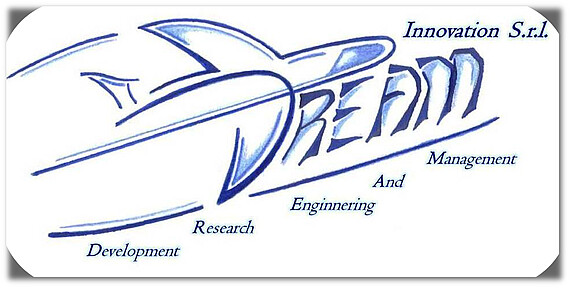
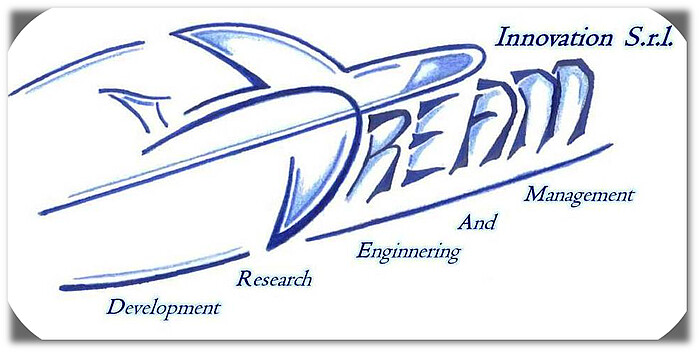
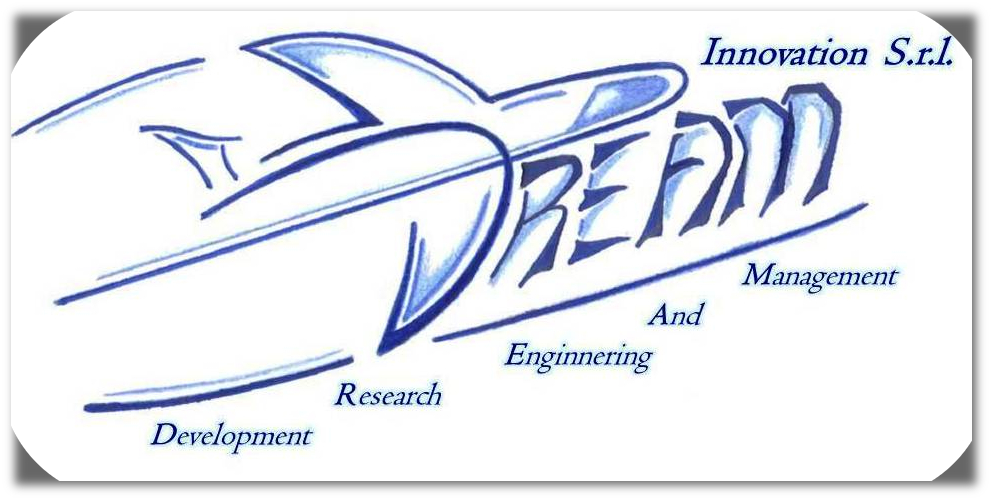
Company: Dream Innovation SRL
Address: Via F. Parri, 1, CAP. 81030, Sant'Arpino (CE), Italy
Website: http://www.dreaminnovation.it/
Contact person: Dr. Serena Russo
E-Mail: info@dreaminnovation.it
General description
Dream-Innovation SRL is a young SME mainly involved in the aeronautical field founded on 2013 bringing together a team of high skilled international experts from different European R&D institutions strongly focused in the aeronautical field. Dream-Innovation competencies regard studies, consulting, numerical analyses, calculations, simulations and experimental analyses, in different engineering fields (Structural Mechanics, Automation and Control, Fluid Mechanics, Thermodynamics, Experimental Investigations, Software Design). In the field of structural mechanics, competencies cover numerical, experimental as well as analytical descriptions of mechanical systems, state-of-the-art static and dynamic stress and strain-analysis for any given material class (metals, composites, ...). Dream-Innovation supports industry in the design and implementation of control systems, predominately computer based, to control industrial machinery and processes offering advantages in terms of cost-efficiency, waste reduction, speed production, ease in production monitoring and management, reduced feedback and action times, over the traditional manual processes. The scope of the industrial controls and factory automation is not limited to the production floor, but it is extended to the overall business processes.
In the fluid-dynamic field Dream-Innovation competencies are extended to EULER/ RANS/ URANS analysis of complex aerodynamic geometries such as aircraft components, high lift for fixed wing A/C aircraft by using Open FOAM CFD codes, Fluent solver or simple aerodynamic tools (potential methods). Competences include Laminar flow technology (2D, 2,5D or 3D laminar boundary layers) and transition prediction feature on swept laminar wing or other aircraft components such as nacelle, tail or fin planes. Available Boundary Layer codes are coupled to tools for the linear stability analysis in incompressible and compressible conditions. Criteria to evaluate the effects on laminar flow produced from gap, step, distributed and single roughness are also implemented in the boundary layer codes.
Role in the project
DREAM supports the numerical activity and the calibration of the CFD model through comparison with a set of selected WT conditions to be chosen in the preliminary phase of the project activities, and then verified and finally validated by comparison with all the other conditions. DREAM support the aeroelastic and aeroacoustic post-test prediction for the definition of the real aerodynamic boundary conditions to update the simulations from the design process.
Adamant Composites Ltd.



Company: Adamant Composites Ltd.
Address: Agias Lavras Str., Thesi Skamnies Ano Kastritsi-Patras, GR26504 GREECE
Website: www.adamant-composites.com
Contact person: Dr. Antonios Vavouliotis
E-Mail: vavouliotis@adamantcomposites.gr
General description
ADAMANT COMPOSITES Ltd (ADC) is a technology company active in the field of Advanced Materials and Structures. The company was founded in 2012, during a deep economic crisis, by risk-taking expert researchers-engineers with international experience and know-how in the field of nanotechnology, processing of composite materials and polymers, mechanical design and analysis of space systems and structures. The vision is to create technological growth in Greece via a cutting-edge manufacturing hub serving Space and High-Tech industries with Design and Manufacturing activities inhouse. We believe in the creation of values through honesty, professionalism, integrity and continuous advance of our personnel. The protection of these values constitutes an integral part and a foundation of our strategy.
Currently the company is staffed with a 17-strong team (average age of 31.5yrs) of engineers, technicians and management, adding up >10yrs and >30yrs of cumulative experience in business and technical expertise, respectively. The assembled team comprises 20% Tech.-Ing., 75% Dipl.- Ing./MSc. of which 40% hold PhDs in the fields of advanced materials and composite structures. ADAMANT has participated in different research, technology, and innovation projects of the European Space Agency and European Commission. Through these activities the company has developed relevant procedures and know-how to address a range of challenges dealing with the development of novel production processes, qualification testing, as well as design and breadboarding of novel concepts; starting from the conceptual design for given or established requirements, going through all the steps for preliminary and detailed design, all the way to manufacturing, assembly and integration of structural and electro-mechanical systems. Next to the R&D activities, the company has cost-effectively supported several commercial industrial activities on Design and Simulation of Structures and Mechanical Ground Support Equipment; such activities include static and vibration analysis, stiffness-driven design of metallic and composite structures, mechanical configuration and assembly, kinematic analysis and other. To cope with the ever-demanding project requirements, we at Adamant Composites are constantly improving our in-house development and manufacturing processes. As of 2016, Adamant Composites has been certified by EUROCERT under EN ISO9001:2008 (Certificate number 1869/Δ) for a range of technical activities covering the end-to-end process cycle for composite structures; from concept and feasibility to processing and manufacturing for aerospace applications as well as high-end technology industries. Included in these activities is the development and processing of advanced materials with specific interest in nano-enabled materials. In 2018, the company transitioned successfully to EN ISO9001:2015.
Next to the consistent growth in turnover >25% per year since its foundation, a continuous investment in infrastructure has been made with an average of >50k€ per year. Adamant Composites is a member of the Hellenic Association of Space Industries and the Hellenic Space Technologies and Applications Cluster.
Role in the project
ADC will be responsible for the tasks related to the manufacturing of the blades assembly and will support activities related to the fitting and inspection of the blades during the test campaign. This covers indicatively:
- Composites Manufacturing Engineering
- Parts Manufacturing
- Assembly & Instrumentation
- Inspection and Testing for Acceptance
- Engineering support during test campaign
- Management support
It has a strong technical involvement in Task 3.2 Manufacture of LTF and instrumentation
While it will support activities in:
- Task 3.1 Design of LTF and instrumentation setup
- Task 3.3 Vibration and static tests
- Task 3.5 Assembly of the test rig & Acceptance
- Task 4.2 Test execution
